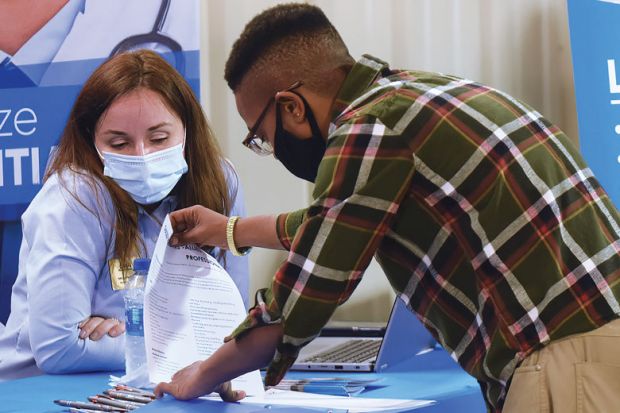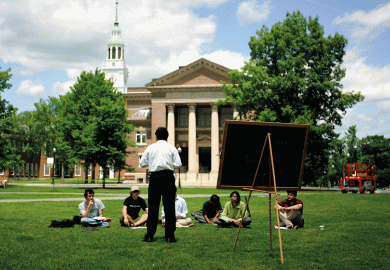After a few years of trying the idea internally, the US National Institutes of Health is moving ahead with a strategy to increase university hiring of ethnic minority faculty by funding them together in groups.
The tactic, which includes grant support and staff diversity training, is credited with increasing minority scientists within the NIH’s own tenure-track ranks from 5 per cent to 13 per cent within two years.
For universities, the NIH’s new initiative is expected to spend $241 million (£172 million) over nine years to help entice institutions to hire minority science faculty in groups as large as 10.
“I’m very excited to see it happen,” said Hannah Valantine, a professor of cardiovascular medicine at Stanford University who developed the programme while serving as the NIH’s first chief officer for scientific workforce diversity.
Professor Valantine said that she had seen many well-intended efforts to improve racial representation in faculty ranks in academic sciences, only to see the minority share stuck around 10 per cent.
That problem, Professor Valantine and the NIH recognised, persisted even as universities were succeeding in producing significantly more minorities with doctoral degrees in the sciences.
For the solution, she noticed that when universities began hiring faculty in clusters about 15 years ago to improve their capacity for interdisciplinary research, it also led to higher rates of minority hiring.
To test the potential implications, she said, the NIH in 2018 began hiring groups of about 15 minority scientists a year for its internal research operations and providing them with a specialised programme of career training and staff mentoring.
The participating scientists were posted to labs spread across the NIH campus near Washington, but they were regularly brought together as a group to help build their sense of togetherness, Professor Valantine said.
The approach helps minority scientists realise they are not alone, the NIH’s director, Francis Collins, told a recent US Senate budget hearing. “They have this opportunity to arrive together, to be mentored, to be encouraged,” Dr Collins said.
That’s essentially the model the NIH now hopes to start on university campuses, Professor Valantine said in an interview from Stanford, where the Gambia-born and London-educated cardiologist returned last September after six years at the NIH.
The new programme, known as Faculty Institutional Recruitment for Sustainable Transformation, or First, has similarities to other NIH funding structures that are aimed at helping young scientists win their first grant awards.
But the main existing one, known as the K99, has itself become problematic for racial equity, Professor Valantine said, because minorities struggle to win the grant, and many universities won’t even hire young candidates without it.
“That whole K99 thing – I think it has backfired a bit,” she said.
For this year’s initial allotment of First awards, the NIH said that it plans to distribute about $70 million among four universities, which would hire up to 10 minority faculty apiece. The K99, meanwhile, totals about $900,000 per researcher over five years.
Dr Valantine said that she would like the NIH to spend even more on the new effort, but also understood the value of universities contributing their own money toward their minority clusters.
“I didn’t want it to be that we were somehow paying them to hire minorities – I think that would be a terrible message,” she said.





